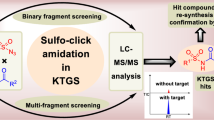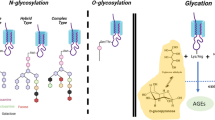Abstract
Various derivatives of the C-terminal amide group in N-protected amino acid and peptide amides were synthesized to assess their suitability as prodrug forms with the aim of protecting the amide or peptide bond against cleavage by α-chymotrypsin. Whereas N-acetylation, N-hydroxymethylation, and N-phthalidylation did not afford any protection but, in fact, accelerated the terminal amide bond cleavage, condensation with glyoxylic acid to produce peptidyl-α-hydroxyglycine derivatives and, to a minor extent, N-aminomethylation were found to improve the stability of the parent amides. Besides protecting the terminal, derivatized amide moiety toward cleavage by α-chymotrypsin, α-hydroxyglycine derivatization resulted in a significant protection, by a factor ranging from 5 to 75, of the internal peptide bond in various N-protected dipeptide amides. These derivatives are readily bioreversible, the conversion to the parent peptide or amino acid amide taking place either by spontaneous hydrolysis at physiological pH, as demonstrated for the N-Mannich bases, or by catalysis by plasma, as for peptidyl-α-hy-droxyglycine derivatives.
Similar content being viewed by others
REFERENCES
K. Wiedhaup. The stability of small peptides in the gastrointestinal tract. In D. D. Breimer and P. Speiser (eds.), Topics in Pharmaceutical Sciences, Elsevier, Amsterdam, 1981, pp. 307–324.
M. J. Humphrey and P. S. Ringrose. Peptides and related drugs: A review of their absorption, metabolism and excretion. Drug Metab. Rev. 17:283–310 (1986).
V. H. L. Lee and A. Yamamoto. Penetration and enzymatic barriers to peptide and protein absorption. Adv. Drug Deliv. Rev. 4:171–207 (1990).
H. Bundgaard. Prodrugs as a means to improve the delivery of peptide drugs. Adv. Drug Deliv. Rev. (in press).
H. Bundgaard and J. Møss. Prodrugs of peptides. 6. Bioreversible derivatives of thyrotropin-releasing hormone (TRH) with increased lipophilicity and resistance to cleavage by the TRH-specific serum enzyme. Pharm. Res. 7:885–892 (1990).
J. Møss and H. Bundgaard. Prodrugs of peptides. 7. Transdermal delivery of thyrotropinreleasing hormone (TRH) via prodrugs. Int. J. Pharm. 66:39–45 (1990).
H. Bundgaard and G. J. Rasmussen. Prodrugs of peptides. 9. Bioreversible N-α-hydroxyalkylation of the peptide bond to effect protection against carboxypeptidase or other proteolytic enzymes. Pharm. Res. 8:313–322 (1990).
H. Bundgaard and G. J. Rasmussen. Prodrugs of peptides. 11. Chemical and enzymatic hydrolysis of N-acyloxymethyl derivatives of the peptide bond. Pharm. Res. 8:1238–1242 (1991).
G. P. Hess. Chymotrypsin—chemical properties and catalysis. In P. D. Boyer (ed.), The Enzymes, Vol. III, Academic Press, New York, 1971, pp. 213–248.
T. C. Bruice and S. Benkovic. Bioorganic Mechanisms, Vol. I, W. A. Benjamin, New York, 1966, pp. 212–258.
C. Hansch and E. Coats. α-Chymotrypsin: A case study of substituent constants and regression analysis in enzymic structure-activity relationships. J. Pharm. Sci. 59:731–743 (1970).
M. L. Bender and J. V. Killheffer. Chymotrypsins. Crit. Rev. Biochem. 1:149–199 (1973).
T. Barth, V. Pliska, and I. Rycklik. Chymotryptic and tryptic cleavage of oxytocin and vasopressin. Coll. Cz. Chem. Comm. 32:1058–1063 (1967).
A. H. Kahns and H. Bundgaard. Facile α-chymotrypsin-catalyzed degradation of the HIV-inhibitor [D-Ala1]-peptide T amide. Int. J. Pharm. (1991) (in press).
J. J. Plattner, P. A. Marcotte, H. D. Kleinert, H. H. Stein, J. Greer, G. Bolis, A. K. L. Fung, B. A. Bopp, J. R. Luly, H. L. Sham, D. J. Kempf, S. H. Rosenberg, J. F. Dellaria, B. De, I. Merits, and T. J. Perun. Renin inhibitors. Dipeptide analougues of angiotensinigen utilizing a structurally modified phenylalanine residue to impart proteolytic stability. J. Med. Chem. 31:2277–2288 (1988).
H. Bundgaard and A. H. Kahns. Chemical stability and plasmacatalyzed dealkylation of peptidyl-α-hydroxyglycine derivatives—intermediates in peptide α-amidation. Peptides (1991) (in press).
H. Bundgaard and M. Johansen. Prodrugs as drug delivery systems. IV. N-Mannich bases as potential novel prodrugs for amides, ureides, amines and other NH-acidic compounds. J. Pharm. Sci. 69:44–46 (1980).
H. Bundgaard. Formation of prodrugs of amines, amides, ureides and imides. Meth. Enzymol. 112:347–359 (1985).
A. H. Kahns and H. Bundgaard. N-Acyl derivatives as prodrug forms for amides: Chemical stability and enzymatic hydrolysis of various N-acyl and N-alkoxycarbonyl amide derivatives. Int. J. Pharm. 71:31–43 (1991).
R. D. Haworth, D. H. Peacock, W. R. Smith, and R. MacGillivray. The action of formaldehyde on proteins. II. Some reactions of N-hydroxymethylamides. J. Chem. Soc. 2972–2980 (1952).
D. D. Wheeler, D. C. Young, and D. S. Erley. Reactions of phthalaldehydic acid. J. Org. Chem. 22:547–556 (1957).
H. Bundgaard. Design of prodrugs: Bioreversible derivatives for various functional groups and chemical entities. In H. Bundgaard (ed.), Design of Prodrugs, Elsevier, Amsterdam, 1985, pp. 1–92.
H. Bundgaard and A. Buur. Prodrugs as drug delivery systems 65. Hydrolysis of α-acyloxy-N-benzoylglycine derivatives and implications for the design of prodrugs of NH-acidic compounds. Int. J. Pharm. 37:185–194 (1987).
H. Bundgaard, A. Buur, K. T. Hansen, J. D. Larsen, J. Møss, and L. Olsen. Prodrugs as drug delivery systems. 77. Phthalidyl derivatives as prodrug forms for amides, sulfonamides, carbamates and other NH-acidic compounds. Int. J. Pharm. 45:47–57 (1988).
F. E. Brot and M. L. Bender. Use of the specificity constant of α-chymotrypsin. J. Am. Chem. Soc. 91:7187–7191 (1969).
W. E. M. Lands and C. Niemann. The interaction of α-chymotrypsin with a series of α-N-acylated-L-tyrosinmethylamides. J. Am. Chem. Soc. 81:2204–2208 (1959).
T. H. Applewhite and C. Niemann. The interaction of α-chymotrypsin with a series of α-N-acetyl-α-amino acid methylamides. J. Am. Chem. Soc. 81:2208–2213 (1959).
K. Morihara and T. Oka. A kinetic investigation of subsites S1‰ and S2‰ in α-chymotrypsin and subtilisin BPN. Arch. Biochem. Biophys. 178:188–194 (1977).
J. A. Hartsuck and W. N. Lipscomb. Carboxypeptidase A. In P. D. Boyer (ed.), The Enzymes, Vol. III, Academic Press, New York, 1971, pp. 1–56).
B. A. Eipper and R. E. Mains. Peptide α-amidation. Annu. Rev. Physiol. 50:333–344 (1988).
Author information
Authors and Affiliations
Rights and permissions
About this article
Cite this article
Kahns, A.H., Bundgaard, H. Prodrugs of Peptides. 13. Stabilization of Peptide Amides Against α-Chymotrypsin by the Prodrug Approach. Pharm Res 8, 1533–1538 (1991). https://doi.org/10.1023/A:1015854718903
Issue Date:
DOI: https://doi.org/10.1023/A:1015854718903




